Creating a regular skincare routine is an excellent way to keep your skin healthy and reduce the appearance of aging or damage. Glycolic acid is an alpha hydroxy acid (AHA) that can benefit your skin in a variety of ways. Glycolic acid is a well-liked component of skin care products because it can exfoliate the skin and enhance its texture and appearance. It originates from sugar cane and is a member of the alpha-hydroxy acids (AHAs) chemical class. Dead skin cells are easily removed from the skin's surface because glycolic acid dissolves the bonds holding them together. This leads to a brighter, smoother complexion.
The Science Behind Glycolic Acid and Its Skin Benefits
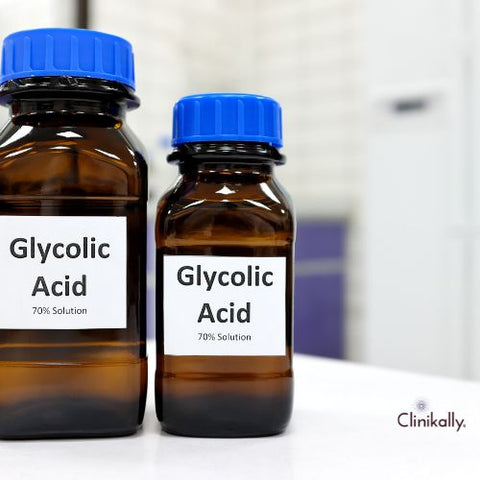
Glycolic acid is a naturally occurring compound found in certain fruits, beets, and sugarcane. In its purest form, it is colourless and odourless. Pharmaceutical and cosmetic companies use glycolic acid in topical products to treat skin conditions and enhance the texture and appearance of the skin. The acid used by cosmetic companies is usually obtained from a laboratory rather than from natural sources.
Here is a brief overview of the science behind glycolic acid and its skin benefits:
-
Glycolic acid works by breaking down the bonds between dead skin cells, which allows them to be easily removed from the surface of the skin. This process of exfoliation helps to reveal brighter, smoother, and more even-toned skin.
-
Glycolic acid also stimulates the production of collagen in the skin. Collagen is a protein that gives skin its strength and elasticity, and its production naturally declines with age. By promoting collagen synthesis, glycolic acid can help to improve the overall texture and firmness of the skin.
-
Glycolic acid has a small molecular size, which allows it to penetrate the skin deeply. This can help to hydrate the skin by attracting moisture and improving the skin's ability to retain it.
-
Glycolic acid has been shown to improve the skin's barrier function, which helps to protect the skin from environmental damage and prevent moisture loss.
-
Glycolic acid can help to reduce the appearance of fine lines and wrinkles by stimulating collagen production and exfoliating dead skin cells.
Overall, glycolic acid is a powerful ingredient that can help improve the texture, tone, and overall health of the skin. Its ability to exfoliate, stimulate collagen production, hydrate, improve skin barrier function, and reduce the appearance of fine lines and wrinkles makes it a popular choice for skincare products. However, it's important to use glycolic acid responsibly and follow the recommended usage instructions to avoid any potential adverse effects.
How to Use Glycolic Acid for Maximum Results

If you're looking to use glycolic acid for maximum results, here are some tips to follow:
-
Start Slowly: If you're new to glycolic acid, start with a lower concentration product (around 5-10%) and use it once or twice a week. Gradually increase the frequency and concentration as your skin becomes more accustomed to it.
-
Use It at the Right Time: Glycolic acid should be used in the evening, as it can increase the skin's sensitivity to the sun. It's also important to follow up with a broad-spectrum sunscreen with an SPF of 30 or higher during the day.
-
Use the Right Product: Choose a glycolic acid product that is appropriate for your skin type and concerns. Products such as cleansers, toners, serums, and masks are all available with glycolic acid, and each can be used differently for different results.
-
Be Consistent: For maximum results, it's important to use glycolic acid consistently. Use it as directed, and don't skip applications. This will help your skin to get accustomed to the acid and its benefits.
-
Pair It with Other Skincare Products: Glycolic acid can be used in conjunction with other skincare products, such as vitamin C, retinol, or hyaluronic acid, to enhance its effects.
-
Follow Up with Hydration: After using glycolic acid, be sure to hydrate your skin with a moisturizer or serum. This can help to prevent dryness and irritation, and can also help to lock in the benefits of the acid.
-
Be Patient: The effects of glycolic acid may take time to become noticeable. It can take several weeks or even months to see maximum results, so be patient and stick with it.
By following these tips, you can use glycolic acid for maximum results. Remember to start slowly, use it at the right time, use the right product, be consistent, pair it with other skincare products, follow up with hydration, and be patient. As always, it's important to listen to your skin and adjust your use accordingly if you experience any adverse effects.
Preventing Skin Purging, Redness, and Burning When Using Glycolic Acid

Glycolic acid is a powerful ingredient that can provide numerous benefits for the skin, but it can also cause skin purging, redness, and burning if used improperly. Here are some tips to prevent these side effects when using glycolic acid:
-
It starts with a lower-concentration product and uses it once or twice a week. Gradually increase the frequency and concentration as your skin becomes more accustomed to it.
-
It performs a patch test on a small area of skin to see how your skin reacts. Wait 24 hours to see if there is any redness or irritation.
-
It can be drying to the skin, so be sure to moisturize your skin after using it. This can help to prevent dryness and irritation.
-
It is important to use a gentle cleanser that won't strip your skin of its natural oils.
-
It avoids using other exfoliants such as scrubs or peels. This can cause excessive irritation and lead to skin purging.
-
It can increase the skin's sensitivity to the sun, so be sure to use broad-spectrum sunscreen with an SPF of 30 or higher during the day.
-
Retinoids can cause excessive irritation and lead to skin purging. It's best to avoid using them together.
-
If you experience excessive redness, burning, or irritation, stop using glycolic acid and consult with a dermatologist.
By following these tips, you can help to prevent skin purging, redness, and burning when using glycolic acid. Remember to start slowly, patch test, moisturize, use a gentle cleanser, avoid other exfoliants, use sunscreen, don't use glycolic acid with retinoids, and stop using it if you experience adverse effects. As always, listen to your skin and adjust your use accordingly if you experience any adverse effects.
Glycolic Acid vs. Other Alpha-Hydroxy Acids: Which One is Best for Your Skin Type?
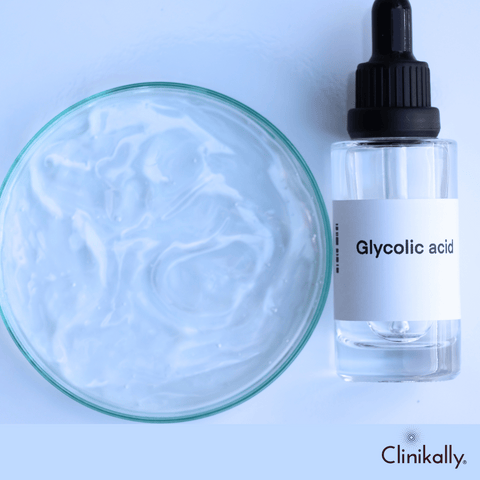
Alpha-hydroxy acids (AHAs) are a group of water-soluble acids that are used in skincare products for their exfoliating properties. Glycolic acid is one of the most commonly used AHAs, but there are other AHAs that can also benefit the skin. Here's a breakdown of some of the most popular AHAs and which skin types they may be best for:
-
Glycolic acid is the most commonly used AHA and is derived from sugar cane. It has a small molecular size, which allows it to penetrate deeply into the skin. It is effective at exfoliating dead skin cells, reducing the appearance of fine lines and wrinkles, and improving skin texture. Glycolic acid is best for those with oily or acne-prone skin, as well as those with sun damage or hyperpigmentation.
-
Lactic acid is derived from milk and is a larger molecule than glycolic acid. It is effective at exfoliating the skin, reducing the appearance of fine lines and wrinkles, and improving skin texture. Lactic acid is best for those with dry or sensitive skin, as it is gentler than glycolic acid and can help to hydrate the skin.
-
Mandelic acid is derived from bitter almonds and has a larger molecular size than glycolic acid. It is effective at exfoliating the skin and reducing the appearance of fine lines and wrinkles. Mandelic acid is best for those with sensitive skin or those with darker skin tones, as it is less likely to cause irritation or hyperpigmentation.
-
Citric acid is derived from citrus fruits and has a larger molecular size than glycolic acid. It is effective at exfoliating the skin and improving skin texture. Citric acid is best for those with normal to oily skin, as it can help to control oil production and prevent acne breakouts.
When it comes to choosing the best AHA for your skin type, it's important to consider your skin's individual needs and concerns. If you have oily or acne-prone skin, glycolic acid may be the best choice for you. If you have dry or sensitive skin, lactic acid or mandelic acid may be more suitable. Ultimately, it's best to start with a lower concentration of any AHA and gradually increase the frequency and concentration as your skin becomes more accustomed to it. Additionally, it's important to listen to your skin and adjust your use accordingly if you experience any adverse effects.
Understanding Exfoliation: The Key to Smoother Skin with Glycolic Acid

Exfoliation is the process of removing dead skin cells from the surface of the skin, revealing smoother, brighter, and more even-toned skin. Glycolic acid is a popular exfoliating ingredient that can help to improve the texture and appearance of the skin. Here's how glycolic acid exfoliates the skin:
-
Dissolves Dead Skin Cells: Glycolic acid is a water-soluble acid that works by dissolving the "glue" that holds dead skin cells together on the surface of the skin. This allows the dead skin cells to be easily removed, revealing smoother, brighter, and more even-toned skin.
-
Stimulates Collagen Production: Glycolic acid can also stimulate collagen production in the skin, which can help to improve the texture and firmness of the skin.
-
Increases Cell Turnover: Glycolic acid can help to increase cell turnover in the skin, which can help to reduce the appearance of fine lines and wrinkles, as well as improve skin texture and tone.
It's crucial to start with a product with a lower concentration of glycolic acid for exfoliation and gradually increase the frequency and concentration as your skin adjusts. Glycolic acid should not be combined with other exfoliating products like scrubs or peels as this can result in excessive irritability and skin purging. After using glycolic acid, make sure to moisturize your skin to prevent dryness and irritation. During the day, use broad-spectrum sunscreen with an SPF of 30 or higher because glycolic acid can make your skin more sensitive to the sun.
Overall, knowing how glycolic acid works and the exfoliation procedure can help you get skin that is smoother, lighter, and more evenly toned. To maximize the benefits of glycolic acid exfoliation, keep in mind to begin gradually, moisturize, wear sunscreen, and refrain from using other exfoliants.
Combating Acne with Glycolic Acid: How It Works and What to Expect
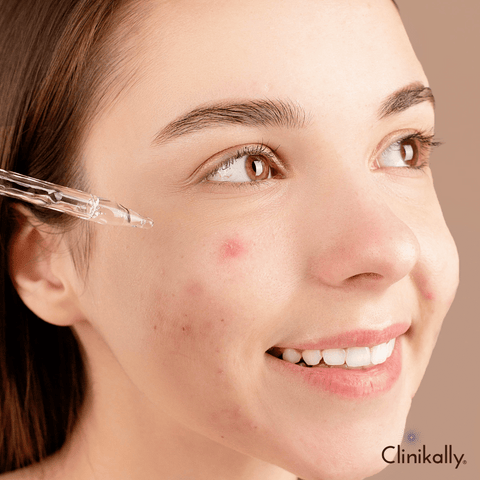
Glycolic acid can be an effective treatment for acne-prone skin. Here's how it works and what to expect when using glycolic acid to combat acne:
-
Exfoliates Dead Skin Cells: Glycolic acid is a powerful exfoliant that works by dissolving the "glue" that holds dead skin cells together on the surface of the skin. This helps to unclog pores and prevent the buildup of bacteria that can lead to acne breakouts.
-
Regulates Oil Production: Glycolic acid can help to regulate oil production in the skin, which can help to prevent acne breakouts. By removing excess oil from the skin, glycolic acid can also help to reduce the appearance of blackheads and whiteheads.
-
Stimulates Collagen Production: Glycolic acid can also stimulate collagen production in the skin, which can help to improve the texture and firmness of the skin. This can help to reduce the appearance of acne scars and other types of skin damage.
It's important to start with a lower concentration product when using glycolic acid to treat acne and gradually increase the frequency and concentration as your skin adjusts to it. Glycolic acid should not be combined with other exfoliating products like scrubs or peels as this can result in excessive irritability and skin purging. Use a broad-spectrum sunscreen with an SPF of 30 or higher during the day as glycolic acid can make the skin more sensitive to the sun. After using glycolic acid, moisturize your skin to prevent dryness and irritation.
Overall, glycolic acid has the potential to be a potent weapon in the fight against acne. It functions by removing old skin cells, controlling oil production, and promoting collagen production, all of which can help to improve the appearance of skin that is prone to acne. Glycolic acid can be a secure and efficient acne treatment when used correctly and with a slow increase in concentration.
Unlocking Anti-Aging and Brightening Benefits with Glycolic Acid
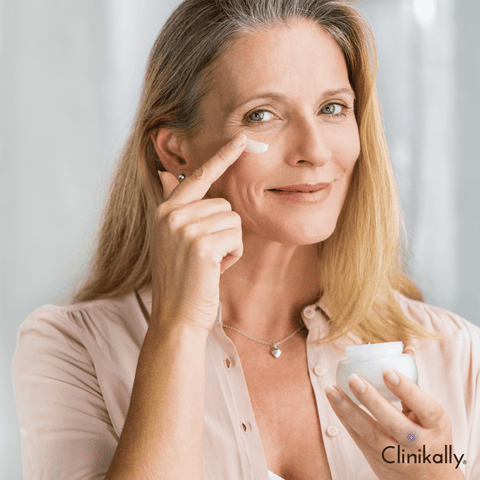
Glycolic acid is a widely used component in skincare products that has anti-aging and brightening properties. The skin is exfoliated with the help of an alpha-hydroxy acid (AHA) derived from sugarcane, revealing a lighter, more even skin tone.
Here are some ways that glycolic acid can help unlock anti-aging and brightening benefits:
-
Glycolic acid exfoliates the skin by breaking down the bonds between dead skin cells, allowing them to be easily removed. This helps to reveal fresher, younger-looking skin that has a more even texture.
-
Glycolic acid stimulates collagen production in the skin. Collagen is a protein that is essential for skin elasticity and firmness. As we age, our collagen production decreases, leading to wrinkles and sagging skin. By boosting collagen production, glycolic acid can help to reduce the appearance of fine lines and wrinkles.
-
Glycolic acid can help to improve skin texture by smoothing out rough patches and reducing the appearance of acne scars and hyperpigmentation. This leads to a more even and radiant complexion.
-
Glycolic acid can also help to increase skin hydration by promoting the production of hyaluronic acid. This is a natural substance that helps to keep the skin plump and hydrated.
-
By removing dead skin cells and smoothing out the skin's surface, glycolic acid can enhance the absorption of other skincare products. This means that any serums or creams applied after using glycolic acid will be better absorbed and therefore more effective.
When using glycolic acid, it is important to start slowly and build up tolerance gradually. It is also essential to wear sunscreen during the day as glycolic acid can increase the skin's sensitivity to the sun. It is recommended to use glycolic acid products at night and to avoid using them in conjunction with other exfoliating products.
Glycolic Acid for Hyperpigmentation and Scarring: What You Need to Know

Glycolic acid is a popular ingredient in skincare products that can help to reduce the appearance of hyperpigmentation and scarring. The condition known as hyperpigmentation, which can leave the skin with dark spots or patches, is brought on by an overproduction of melanin, the pigment that gives our skin its color. The skin's natural healing response to an injury, such as acne or a cut, results in scarring, which can leave behind noticeable marks.
Here's what you need to know about using glycolic acid for hyperpigmentation and scarring:
-
As mentioned earlier, glycolic acid is an exfoliating ingredient that can help to remove dead skin cells and stimulate cell turnover. This can help to fade hyperpigmentation and reduce the appearance of scars by encouraging the growth of new, healthy skin cells.
-
Glycolic acid can also help to brighten the skin by removing dull, dead skin cells and revealing a brighter, more even complexion. This can help to reduce the appearance of hyperpigmentation and make scars less noticeable.
-
Glycolic acid has been shown to stimulate collagen production in the skin. Collagen is a protein that is essential for skin elasticity and firmness. By boosting collagen production, glycolic acid can help to improve the texture and appearance of scars.
-
When using glycolic acid for hyperpigmentation and scarring, it's important to start with a low concentration and gradually increase it as your skin builds tolerance. Using a high concentration of glycolic acid can cause skin irritation and make hyperpigmentation and scarring worse.
-
It's essential to wear sunscreen when using glycolic acid as it can increase the skin's sensitivity to the sun. Sun exposure can worsen hyperpigmentation and scarring, so protecting your skin from the sun is important for achieving the best results.
It's important to note that glycolic acid may not work for everyone, and it's best to consult with a dermatologist or skincare professional to determine the best treatment plan for your specific skin concerns. They can also recommend other ingredients or treatments that may be more effective for your skin type and concerns.
Keeping Your Skin Moisturized While Using Glycolic Acid: Tips and Products
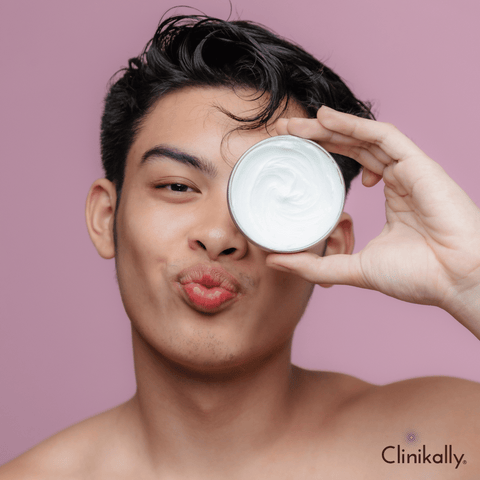
Glycolic acid is a powerful exfoliating ingredient that can help to improve the texture and appearance of the skin. However, it can also be drying and irritating, especially for those with dry or sensitive skin. Here are some tips and products for keeping your skin moisturized while using glycolic acid:
-
Use a gentle cleanser: Use a gentle, hydrating cleanser to cleanse your skin before applying glycolic acid. Avoid using harsh or stripping cleansers that can further dry out the skin.
-
Apply a moisturizer: After applying glycolic acid, it's important to moisturize your skin to prevent dryness and irritation. Look for a moisturizer that is lightweight and non-comedogenic, so it won't clog your pores. Avoid using heavy or occlusive moisturizers that can interfere with the absorption of glycolic acid.
-
Look for humectants: Humectants are ingredients that help to draw water into the skin and keep it hydrated. Look for moisturizers that contain humectants like glycerin, hyaluronic acid, or urea.
-
Use a facial oil: Facial oils can help to lock in moisture and nourish the skin. Look for oils that are lightweight and non-comedogenic, like jojoba oil, argan oil, or squalane oil.
-
Apply a hydrating serum: Hydrating serums can help to boost the skin's moisture levels and prevent dryness. Look for serums that contain ingredients like hyaluronic acid, ceramides, or niacinamide.
Moisturizing components are already present in some glycolic acid products. Consider purchasing products with hydrating components like glycerin, hyaluronic acid, or aloe vera. Also think about using a glycolic acid product that is customized for your skin type and issues.
Keep in mind to introduce glycolic acid gradually and increase tolerance over time. Reduce the frequency of use or switch to a lower concentration if any itchiness or dryness occurs. Additionally, remember to always wear sunscreen during the day because glycolic acid can make skin more sensitive to sunlight.
Sensitive Skin? No Problem: How to Incorporate Glycolic Acid Safely

If you have sensitive skin, incorporating glycolic acid into your skincare routine can be tricky, as it can cause irritation, redness, and dryness. However, it is still possible to use glycolic acid safely by following these tips:
-
Begin with a glycolic acid product that has a low concentration, usually around 5%. This will allow your skin to slowly build a tolerance to the acid without causing too much irritation. Once your skin adapts to the acid, you can gradually increase the concentration.
-
Before applying glycolic acid to your entire face, do a patch test on a small area of your skin. Wait 24 hours to see if there is any redness, itching, or irritation.
-
Start by using glycolic acid only once or twice a week, gradually increasing the frequency as your skin tolerates it. Avoid using glycolic acid products on consecutive days.
-
Apply glycolic acid after cleansing and toning your face, but before any moisturizer or other skincare products. Use a small amount of product and gently massage it into your skin with your fingertips. Avoid the eye area.
-
Follow with a moisturizer: After applying glycolic acid, moisturize your skin with a gentle, hydrating moisturizer. This will help to lock in moisture and prevent dryness.
-
Use at night: Since glycolic acid can increase the skin's sensitivity to the sun, it is best to use it at night. If you must use it during the day, be sure to wear a sunscreen with at least SPF 30 to protect your skin.
-
Avoid other exfoliants: Do not use other exfoliating products, like scrubs or peels, while using glycolic acid. This can cause excessive irritation and damage to the skin.
It is also important to note that glycolic acid may not be suitable for all skin types, especially those with severe or active skin conditions like rosacea or eczema. Consult a dermatologist or other skincare specialist if you have any questions about whether glycolic acid is safe for you.
The Importance of pH Balance When Using Glycolic Acid: How to Ensure It's Right for You

When using glycolic acid, it's crucial to take into account your skin's pH balance because it affects how the acid reacts with your skin. When used at a pH of about 3.5, which is slightly acidic, glycolic acid performs best. However, using glycolic acid at a pH level that is too high or too low can irritate the skin and harm it. The following advice will help you make sure your pH balance is ideal:
-
Look for skincare products that disclose their pH level. The optimal pH range for glycolic acid is between 3 and 4, so look for products that fall within this range. Avoid products with a pH that is too low, which can cause skin irritation and damage.
-
A toner with a pH of around 5.5 can help to balance the pH of your skin after using glycolic acid. This can help to reduce the risk of irritation and redness.
-
After applying glycolic acid, wait a few minutes before applying other skincare products. This will give the acid time to fully penetrate and work on your skin without being neutralized by other products with a higher pH.
-
Avoid using alkaline products like bar soap, which can raise the pH of your skin and neutralize the effects of glycolic acid.
-
If you're new to using glycolic acid, start with a low concentration and gradually build up to higher concentrations. This will give your skin time to adjust to the acid and help prevent irritation.
-
If you have sensitive skin or are unsure about how to use glycolic acid, consult with a skincare professional or dermatologist. They can help determine if glycolic acid is right for your skin and recommend products that are appropriate for your skin type.
In summary, maintaining a pH balance is important when using glycolic acid. By using products with the appropriate pH, waiting before applying other products, and starting slowly, you can ensure that glycolic acid is safe and effective for your skin.
Concluding Thoughts: Achieving Clear, Bright, and Smooth Skin with Glycolic Acid

In conclusion, glycolic acid is an effective component for achieving smooth, bright, and clear skin. It is a kind of alpha-hydroxy acid that improves skin texture by exfoliating the epidermis, reducing hyperpigmentation, and reducing wrinkles. However, it's crucial to use glycolic acid responsibly and safely, particularly if you have delicate skin. Start with a low concentration and start using glycolic acid sparingly to incorporate it into your skincare regimen. As your skin gets used to the acid, gradually increase the frequency and concentration. Use a moisturizer after applying sunscreen and always use one to protect your skin from sun damage.
To make sure glycolic acid is efficient and secure for your skin, it's also crucial to maintain a pH balance. Use a pH-balancing toner, look for products with a pH between 3 and 4, and stay away from alkaline products that can make your skin more alkaline. To get the best results from glycolic acid, keep in mind to be patient and consistent with your skincare regimen. With careful application and safety measures, glycolic acid can be a useful tool in your skincare toolbox, assisting you in achieving the clear, radiant, and smooth skin you desire.
















